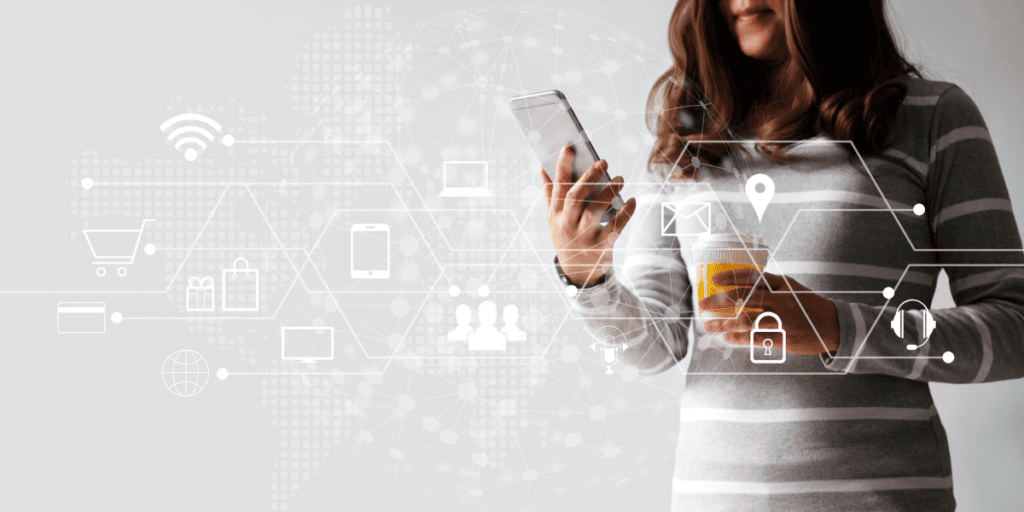Customer Experience (CX) software is a set of online tools and services that are used to improve the customer experience — that is, the sum of experiences that people may have with a brand, its services, web and social media, contact center, and other key touch points. Customer experience software is an umbrella term that can encompass many different sets of tech solutions for improving these experiences; so much so that it can be difficult to choose the right ones to fit your organization’s needs.
Some of the most common services provided by customer experience software could include, but are not limited to: automating customer service functions through chatbots and other tools, diagnosing technical bugs and disruptions to the user experience (UX) of a website, aggregating CSAT and NPS survey results for data reporting, and leveraging online customer data to guide content marketing.

Such CX tools often fall under the category of customer relationship management (CRM) and offer organizations a quantitative view of their target audience’s behavior. They quantify customers’ online behavior, whether through survey or online engagement analytics, to inform CX strategy.
Another set of tools includes qualitative customer experience software. Qualitative CX software includes platforms that automate many traditional market research functions, resulting in rich, scalable insights that give further context to online behaviors. Qualitative CX tools can gather feedback to inform: product and innovation, marketing, customer success, brand, insights, and design teams (Forbes).
“Qualitative customer experience software really allows teams to look beyond online surveys and spreadsheets, bringing color and context to data by turning customers’ experiences into insights,” says Discuss Co-Founder and Chief Strategy Officer Jim Longo.
Need to better understand which types of customer experience software are relevant to your organization’s needs and how customer experience software can help you achieve your business objectives? In this post, we’ll explore the why’s and how’s of these critical tools and services.
Why use customer experience software now?
Consumer behavior shifted online dramatically as a result of the pandemic in 2020, and it has become evident that digital experiences will never return to pre-pandemic levels.
According to Jim: “Fewer brick-and-mortar experiences means more work needs to be done in the digital space through a focus on CX and UX. As a result, CX software has become critical as organizations need new windows into people’s experiences.”
Today, consumers stay loyal to brands due to the experience they receive rather than simply the price or even quality of a product. For businesses to continue winning over customers and earning their loyalty, customer experience has grown in importance and become a key differentiator. Therefore, maintaining good CX is a business imperative, and an objective that many innovative companies have achieved through advanced customer experience software such as AI and other automation tools.
According to Gartner, in 2019, 25% of all customer interactions were automated through customer experience software such as AI and machine learning. With 90% of companies now planning to deploy AI within 3 years, this number is expected to grow to 40% by 2023. It’s become more clear over the past few years that good customer experience is increasingly dependent upon innovative software that can help organizations manage and scale exceptional interactions.
How customer experience software can help
Customer experience software not only improves customer relationships for quick wins, but it enables organizations to gain insight and feedback to inform long term strategy as well. To identify the CX tools that are right for your organization, keep in mind which key benefits you wish to achieve, such as:
- Tailoring your communications to customers. Optimize customer engagement at certain touchpoints with highly personalized messaging based on your conversations and what the online data and research tells you in terms of where the customer is on their journey with your brand and their preferences and behaviors. You’ll be able to create compelling and relevant content and deliver insightful offers, recommendations, advice, and service actions when a customer is most receptive. In addition, you can create personalized content and experiences at scale.
- Delivering a consistent customer experience across multiple engagement channels. Today’s consumers expect a brand to be everywhere they are – mobile, apps, social media, website, email, phone – to connect and engage seamlessly across all channels. Accomplishing this provides you with a complete picture of each individual customer and their interactions with your company.
- Capturing customer feedback in real time. Use embedded analytics to learn how customers engage with your brand and predict what that engagement will look like in the future. Today, customers expect companies to know how to address their future needs. Having this type of information at your disposal helps you track customer perceptions and will allow you to identify potential buying trends and how you can leverage them.
- Measuring and enhancing customer loyalty. Create memorable experiences for personalized customer loyalty programs and to gain advocates for your brand. Strengthening brand loyalty can lead to higher spend, with brand advocates purchasing more items or services and returning to the brand more frequently.
Finding the right customer experience platform
As previously noted, customer experience software can involve gathering customer information from a range of sources, both quantitative and qualitative. To narrow down your search, ask yourself if the customer experience platform you are considering meets the follow requirements:
- Can it gather customer experience data from multiple channels? Customer data can be gathered through multiple ways, such as from your website, social media, pre-recorded customer conversations, third-party apps, as well as from physical locations.
- Does it have the right analytics tools? With the right purpose-built platform, you should have the most up-to-date customer statistics and relationship analytics for data-driven responses that matter.
- Does it integrate all data in one place? The fewer platforms and services that you need to interact with on a daily basis, the more frictionless your workflow will become as you share real-time updates and historical interactions in order to identify trends and patterns. Get singular views, analytics, and insights by integrating all data into one platform.
For qualitative research and insights, learn more about the Discuss People Experience Platform, a one-stop solution for gaining customer insights from live and unmoderated feedback.
Conclusion
Failing to gather relevant, context-rich customer intelligence through the right software is often the reason why businesses fail to provide their customers with great experiences. According to Zendesk, 50% of customers will switch to a competitor after one bad experience; 80% will switch after more than one.
Customer experience software enables organizations to truly put people at the center of their business, leveraging data to develop business and marketing strategies that align with their needs. Optimized CX can lead to increased awareness, conversion, retention and customer satisfaction, informing everything from product development, sales and marketing, client services, to upselling opportunities and more.
Engage with customers through pivotal moments of their journey and drive people-centric change with customer experience software. To learn more about how to leverage the Voice of the Customer (VOC) with CX tools for better business outcomes, read our ebook: “Supercharge Your Customer Experience (CX).”




